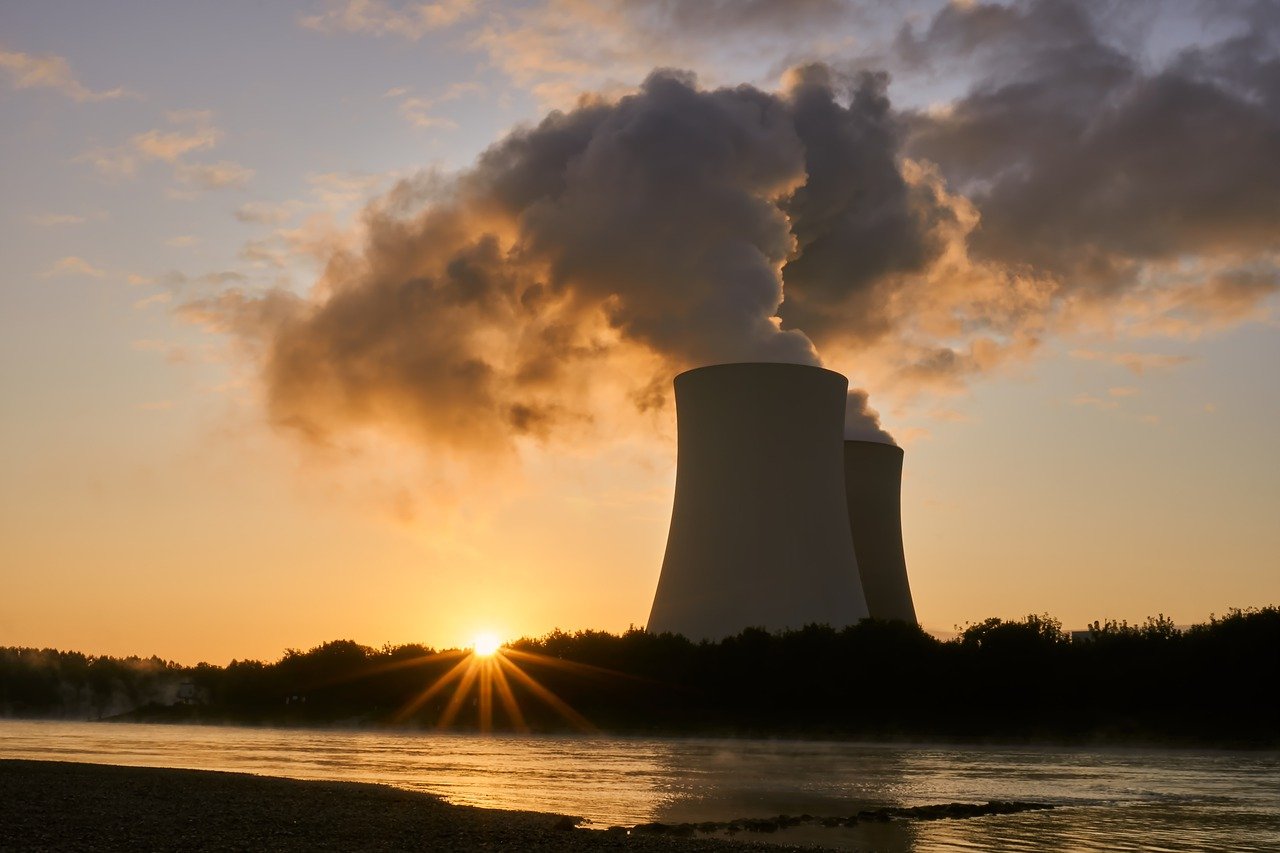Energy sovereignty and the role of nuclear energy

By Oriol Parera
04/03/2021
We usually hear vague proposals that would quickly improve the current energy model, lower CO2 emissions, and lead us to a sustainable society in the short term. These proposals then do not materialize for two reasons: the energy dependence on fossil fuels as a determining factor and the lack of pragmatism in the technical and economic viability of the proposed solutions. Currently, the energy sovereignty and security of states with energy resources similar to those of Catalonia can only be achieved with a large contribution of nuclear energy to the final energy mix. In order to focus the debate on the energy model, it is necessary to connect with the reality of the present regarding energy without needing to analyze the historical reasons that have shaped its current landscape.
We must first distinguish between final energy and electrical energy. Electricity in Catalonia constitutes approximately a quarter of the total final energy consumed. The remaining three-quarters of the final energy consumed, which does not come from electricity, comes mainly from fossil fuel consumption for transport and industry. This distribution is typical in heavily industrialized regions, where differences usually exist primarily in the energy sources used for electricity generation. Today, alternatives to fossil fuels for transportation and industry are not implemented on a scale large enough to significantly impact the final energy consumed.
Within the framework of the electricity system of Spain, Catalonia has an electricity demand that adjusts to its productive capacity and does not depend structurally on electricity imports. This is achieved with a distribution that has remained fairly constant in recent years and can be summed up as 50% of nuclear origin, 20% renewable, and 30% fossil. In this way, almost 70% of electricity production is free of CO2 emissions, being one of the highest ratios in the European ranking, and of course on the international scene. This advantageous position in the decarbonization of electricity generation is thanks to the two nuclear power plants (3 reactors) that operate in the south of Tarragona and prevent the production of approximately 20 Mt CO2/year.
Energy policy debates often focus excessively on electricity generation sources without considering that it is in the remaining three-quarters of the final energy consumed where it is necessary to focus to progress with decarbonization. Here is a diagram that summarizes the annual final energy consumption by sources in Catalonia:

Yearly energy consumption sources in Catalonia. Source ICAN and REE
Approximately 20% of final consumption is free of CO2 emissions while representing low self-sufficiency availability. The high degree of energy dependence is closely linked to the use of fossil fuels, in which transport is responsible for half of the final consumption.
It is obvious that Catalonia does not have the natural resources to satisfy the current energy demands and make up for its dependence on oil and gas. It is precisely these two sources of energy that are the main causes of the current level of pollution that we suffer globally, in addition to the health problems that arise from it. For this double reason, the maximum reduction in the use of fossil fuels should be prioritized.
Mitigating energy dependence
Therefore, the decarbonization of transport is a great challenge that must be faced to guarantee the energy sovereignty of Catalonia. The replacement of fossil fuels as an energy source necessarily involves a much more rigorous debate before claiming that some source of CO2-free electricity generation can be dispensed with.
Alternatives to electrification and the use of hydrogen to decarbonize transportation are well known. However, these proposals do not solve dependence or pollution, since electricity (or hydrogen) generation is obtained through fossil fuels. For this reason, the energy debate needs to focus on primary energy (obtained directly from nature) and not on final consumption energy.
It can be seen from the outset that ending fossil fuels in transportation necessarily requires a significant increase in electricity production capacity. Leaving aside the fact that it is clear that to take on this increase, it is necessary to maximize renewable generation (wind and solar), one cannot uncritically dispense with a technological option capable of producing electricity in a stable, competitive, and CO2-free way: nuclear energy. The adoption of a renewable/nuclear energy model, which includes the production of hydrogen as an energy vector; offers the most realistic option if the aim is to drastically reduce dependence on fossil fuels over a time horizon of 10-20 years.
Decarbonization and energy independence in Catalonia inevitably involve the electrification and production of hydrogen through renewable sources and nuclear energy. It is important to be aware that hydrogen is a vector of energy and must be treated and analyzed in the same way as for electricity. It also offers the advantage of being used as an energy reserve and its production can be concentrated in the lower demand ranges, optimizing installed power. Electricity and hydrogen are not natural energy sources and it must therefore be ensured, in a decarbonized future, that their production is based on methods detached from fossil fuels.
Nuclear power requires uranium as a fuel, and therefore the dependence associated with this need must be taken into account. As a result, there would be a dependence on the import of nuclear fuel, but this has a characteristic that differentiates it from other raw materials: a very high energy concentration. Five grams of uranium, a tablet of nuclear fuel, is equivalent to 1000 kg of coal, 565 liters of oil, or 480 m3 of natural gas. This feature facilitates storage, allowing strategic reserves to be established for years to come, and makes it a raw material that is not susceptible to rapid market fluctuations, which differentiates it from fossil fuels. Nuclear fuel, therefore, reduces the dependencies that can affect the energy security of a state and its sovereignty and protect the productive capacity and competitiveness of businesses from the political instability of fossil fuel exporting countries.
Energy policy and national sovereignty
As an example, in a hypothetical situation of isolation and blockade of gas exports, with its current resources, Spain would have capacity for electricity generation of less than a month, while France would be able to continue its regular electricity production beyond a year. This is due to the French commitment to mostly nuclear power generation and the Spanish dependence on gas imported from Algeria. This degree of control and self-sufficiency makes it possible to establish more stable costs and, at the same time, successfully comply with greenhouse gas emission reduction programs. The French case would be an example of the importance of a strategic energy policy appropriate to the country’s reality.
In contrast, the German case and its Energiewende (energy transition) show that an energy policy based largely on electoral criteria may lead to the prioritization of the closure of nuclear power plants over fossil fuels, and in return, this causes an increase in coal-based electricity production. This transitional policy has been widely criticized, not so much for its costs, but for being contradictory to the program to reduce CO2 emissions and especially for weakening German energy security by making the country more dependent on Russian gas imports through Nord Stream.
On the other hand, it is important to mention that the global commitment to constructing new nuclear power plants today is mainly led and monopolized by Russia, China, and South Korea. These powers are managing to develop a national industry with export capacity, leaving the traditional European and American nuclear industry out of the game.
So, seeing that nuclear power today offers the only emission-free alternative with enough capacity to replace fossil production, why doesn’t it enjoy widespread deployment and support everywhere? What leads nuclear power to suffer from a rejection that is still too widespread today, if it is clear that it is in an unbeatable situation regarding emissions and associated mortality?
These nuclear safety issues would lead to another, more extensive and overriding debate, as the rejection of nuclear energy is often explained more by irrational than rational sociological factors. However, it is important to emphasize that states with a strong commitment to nuclear energy also make a significant effort in educational communication, which translates into greater collective acceptance, especially after perceiving the social return that this industry entails.
Final considerations
Attempts are often made to assimilate renewable energies as the only alternative to reduce CO2 emissions, but despite the fact that Catalonia needs a greater implementation of renewable energy sources, both today and in the mid-term, replacing the contribution of fossil fuels in the final energy consumption mix is not realistic. For this reason, Catalonia cannot afford to give up nuclear energy if it wants to meet the challenges of decarbonization and achieve true energy security and sovereignty.
Oriol Parera is an industrial engineer and consultant in nuclear security. He holds a master’s degree in Nuclear Engineering by the Polythecnic University of Catalonia and the École Polytechnique Fédérale de Lausanne.
The opinions expressed in this publication are those of the authors. They do not purport to reflect the opinions or views of the CGI or its contributors. The designations employed in this publication and the presentation of material therein do not imply the expression of any opinion whatsoever on the part of the CGI concerning the legal status of any country, area or territory or of its authorities, or concerning the delimitation of its frontiers.


